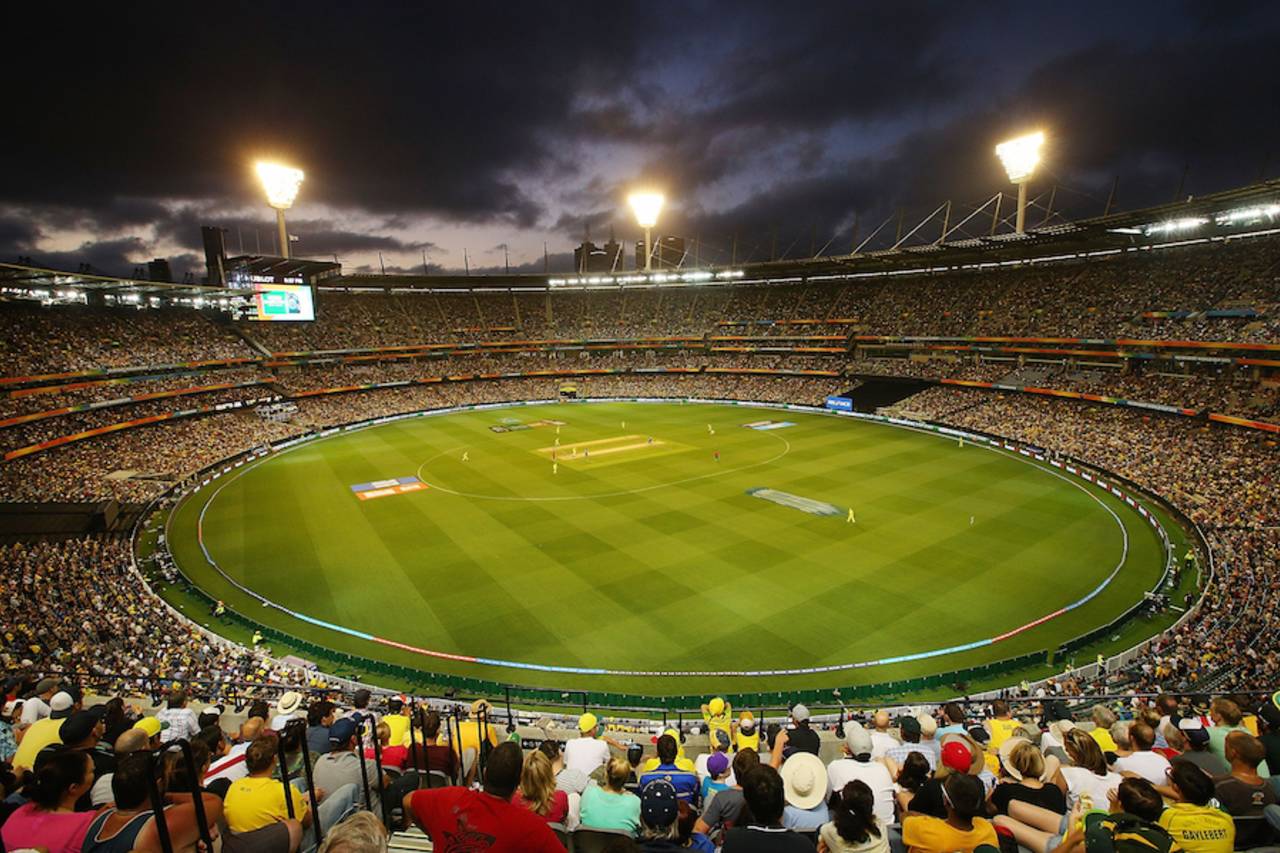Exhilarating and intimidating MCG
It's size and history make the Melbourne Cricket Ground a house of sporting dreams
Firdose Moonda in Melbourne
21-Feb-2015

'The last few games I played here it wasn't full, and it almost feels wrong in a way' - AB de Villiers on the MCG • ICC
Cenophobia. The fear of empty rooms. The feeling you get inside the MCG.
It is a stadium that stirs emotions that sporting dreams are made of, but it is also a stadium of significant size. With no one in it, it only seems bigger, rounder, taller, deeper, hollower, scarier. Imagine it when it's full.
Some in the South African camp don't have to imagine. Allan Donald played three Tests and seven ODIs at the MCG and still finds it daunting. "The MCG is an intimidating place. You just have to walk out there, even when these stands are empty and it's an intimidating place - full stop," he told the Australian media.
What must Vernon Philander and Imran Tahir, neither of whom who have played here before, be thinking? They could be overawed by the occasion, by the prospect of more people than they have ever seen in the same space shouting for the opposition, because let's face it, the support is expected to be Indo-centric, or they could be see it as an opportunity, like AB de Villiers does.
"I'm pretty happy that it's going to be packed. The last few games I played here it wasn't full, and it almost feels wrong in a way. You almost get lost in the middle out there because it's so big. So it's nice to know that it's going to be chock-a-block," de Villiers said. " I've always enjoyed big crowds and enjoyed busy games, intense games, so it should get the blood flowing tomorrow playing in front of the big crowd in a big stadium with great tradition and history."
To properly experience that, you have to look beyond the looming light pylons, which are the highest in the world and the grand stand, which was revamped a decade ago and seal the stadium. You have to start outside it, where you face a cross-road of bridges. One will take you to the Rod Laver Arena, the other across the William Barak Bridge, which will sing to you as you tip-toe on the star-spangled floor. It shimmers, even without sunlight, because of the material it is made from. Mingled with the music that comes out of the speakers, the experience is magical, every time.
The walk is only 525 metres but transcends time because it takes pedestrians on a journey of heritage. That is what Australia does so well, especially when it comes to its athletes. Unlike South Africa, whose history is so divided that it cannot be commemorated in the same room, even as separate entities, all Australian sport is celebrated at the MCG's museum. It is housed in the ground, it is part of the structure itself and it is a place where the memories made in Melbourne and everywhere else Australian sportspeople have succeeded are kept.
South Africans, who do not have something similar, have to store their triumphs in their minds for now. That's what JP Duminy has done. He launched his career at the MCG with 166 in the Boxing Day Test in 2008, an innings which was also the catalyst for a historic series win. Naturally, he cannot wait to get back to the ground where he made his name. "It's not every day that you get to play in front of so many people," Duminy said. "The MCG is somewhere I have thoroughly enjoyed playing. Hopefully I will be given an opportunity to do something special again."
But does that mean when South Africa step onto the MCG they should solely be thinking of walking in the footsteps of giants? Not really.
Not everyone hailed as a hero in that theatre of dreams had big feet. Just pop into the museum and catch a glimpse of Cathy Freeman's shoes. The Australian sprinter had feet so small, her steps would probably not even register a decibel on the floor in the great hall that is the MCG, even if it was completely empty.
Firdose Moonda is ESPNcricinfo's South Africa correspondent